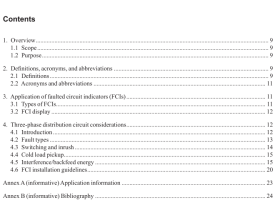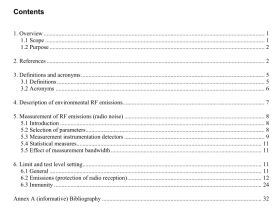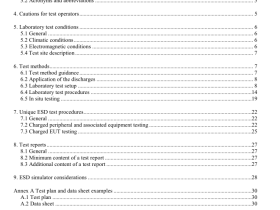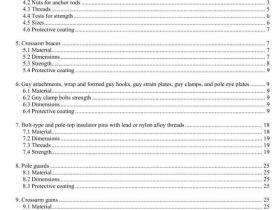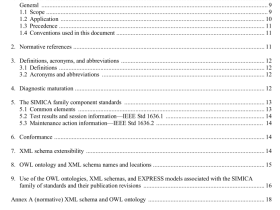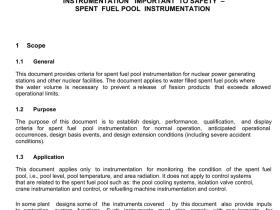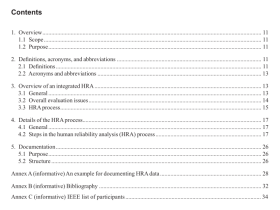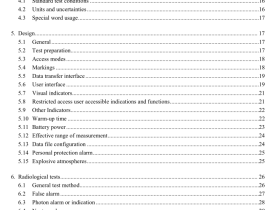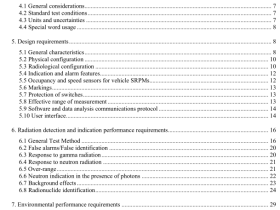IEEE Std 45.4 pdf download
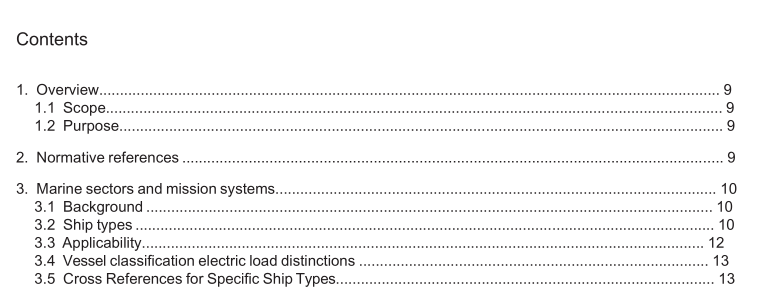
IEEE Std 45.4 pdf download IEEE Recommended Practice for Electrical Installations on Shipboard— Marine Sectors and Mission Systems
1. Overview1.1 Scope
This recommended practice identifies the various marine segments and ships covered in the lEEE45TM seriesof standards. It provides grouping of ships and their predominant mission systems for classification and usedby other parts of IEEE 45.This document is intended to be used in conjunction with other IEEE45 standards.
1.2 Purpose
An extension of the baseline technology and methods covered by lEEE 45, this standard provides a consensusof recommended practices for marine sectors and mission systems in marine electrical engineering as appliedspecifically to ships, shipboard systems,and equipment.
2. Normative references
The following referenced documents are indispensable for the application of this document (i.e., they mustbe understood and used, so each referenced document is cited in text and its relationship to this document isexplained).For dated references, only the edition cited applies.For undated references, the latest edition of thereferenced document (including any amendments or corrigenda) applies.
IEEE Std 45.1 TM-2017,IEEE Recommended Practice forElectrical Installations on Shipboard—-Design.12IEEE Std 45.3TM-2015,IEEE Recommended Practice for Shipboard Electrical Installations—SystemsEngineering.
3. Marine sectors and mission systems
3.1 Background Figure 1 shows the design process from concept design to product baseline and the relationship between IEEE Std 45.1-2017 and IEEE Std 45.3-2015, which provide the recommended practice for electrical installations shipboard. 3 This standard provides the definition of which ship types the IEEE 45 series of recommended practices are applicable to.
3.2 Ship types There are innumerable schemes developed to classify ships and vessels. Figure 2 provides a simplified taxonomy of ship and vessel types, broadly divided between commercial and naval vessels. There may be commonality between vessel types, and often a vessel can be suitable for multiple roles. For instance, commercial ocean liners have often been re-designated naval troop carriers in time of conflict. In addition to the taxonomy of subdividing ships and vessels by function, there are also classifications by governing authority which include (not an exhaustive list):
— Sovereign government: Military specifications and standards for naval vessels
— American Bureau of Shipping (ABS)
— Germanischer Lloyd (GL)
— Bureau Veritas
— Det Norske Veritas
— Lloyd’s Register
— Russian Maritime Register of Shipping
— Nippon Kaiji Kyokai
— Korean Register of Shipping
— Indian Register of Shipping
— Polish Register of Shipping
— Registro Italiano Navale
— Croatian Register of Shipping
— China Classification Society
The vessel owner, based on the vessel’s purpose, will determine which classification standards to require. The vessel designer and vessel builder must design and build the vessel to those standards.
3.3 Applicability
3.3.1 Applicable vessels
The lEEE 45 series of recommended practices have been prepared for application a broad range of bothcommercial and naval vessels, as outlined in Figure 2, including:
a) Passenger vessels:
1)All vessels of 100 gross tons or more whose principle purpose is the carrying of passengers.
2) Passenger vessels under 100 gross tons carrying more than six but less than 150 passengers or
that has overnight accommodations for less than 50 passengers.
3)Passenger vessels carrying more than 150 passengers or with overnight accommodations for
more than 49 passengers.
b)Cargo vessels:
1) Liquid: All vessels whose principle purpose is the carrying of combustible,flammable,orhazardous liquid cargo in bulk (e.g., crude oil, refined oil, gasoline, liquid chemicals, etc.).
2)Dry:All vessels carrying freight for hire (e.g., bulk, containerized, automobiles, etc.).c)Work vessels:
1)Offshore supply vessels.2) Nautical school vessels.
3)Oceanographic research vessels—All vessels engaged in oceanographic research.
4)Mobile offshore drilling units(MODU)—A vessel, other than a “mobile inland drilling unit,”
which is capable of engaging in drilling or workover operations for the explorations andexploitation of subsea mineral resources.These recommendations apply to all types of MODUswithout production facilities, including, but not limited to, semi-submersible units, submersibleunits, self-elevating or jack-up units,and drill ships and tenders.
5)Mobile inland drilling units (MIDU)—A vessel, other than a “mobile offshore drilling unit,”
which is capable of engaging in drilling or workover operations for the exploration or exploitationof subsea mineral resources and is designed and intended for use in US waters, rivers, inlandlakes, bays, or sounds.These recommendations apply to all types of MIDU without productionfacilities, including, but not limited to, inland barges and posted inland barges.
d)Miscellaneous vessels—All vessels not covered in other groups, all tugboats and tow boats, and allseagoing barges not covered in other groups.
